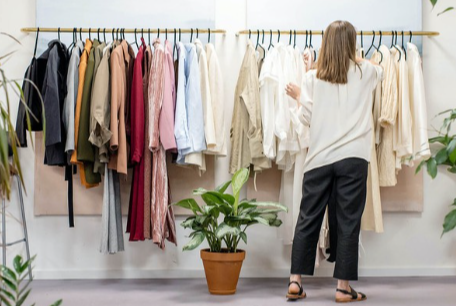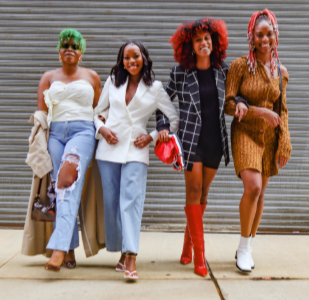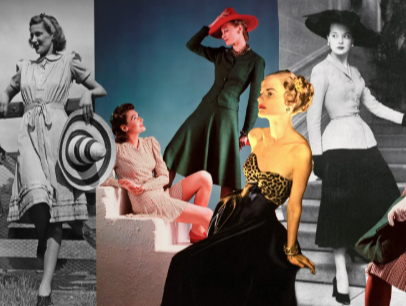Sustainable Fashion: How to Build an Eco-Friendly Wardrobe
Sustainable fashion is gaining traction as consumers become increasingly aware of their choices’ environmental impact. Building an eco-friendly wardrobe involves selecting ethical brands, exploring second-hand options, and practicing garment care. These steps not only promote a more responsible approach to fashion but also encourage creativity and individuality. However, understanding the broader implications of fast fashion and the benefits of a mindful wardrobe requires further exploration. What strategies can individuals adopt to make a meaningful difference?
Understanding Sustainable Fashion
Sustainable fashion represents a transformative approach to clothing production and consumption, emphasizing ecological integrity and social responsibility.
This movement encourages individuals to embrace sustainable practices that prioritize ethical sourcing, reduced waste, and the use of environmentally friendly materials. By making eco-conscious choices, consumers can support brands committed to transparency and fair labor conditions.
Sustainable fashion not only reduces the environmental impact of clothing production but also fosters a culture of mindfulness around consumption. Individuals are encouraged to invest in quality pieces that last, rather than succumbing to fleeting trends.
Ultimately, sustainable fashion champions a holistic view of style—one that aligns personal expression with a commitment to the planet and its inhabitants, promoting a future where fashion and sustainability coexist harmoniously.
Read more: Top Fashion Trends to Watch in 2025
The Impact of Fast Fashion
The impact of fast fashion extends far beyond consumer trends, significantly contributing to environmental degradation, social justice issues, and economic overconsumption.
This industry model prioritizes rapid production and low costs, often at the expense of ecological health and fair labor practices.
Understanding these consequences is crucial for fostering a more sustainable approach to fashion.
Environmental Degradation Consequences
Fast fashion, characterized by its rapid production cycles and low-cost garments, has become a significant contributor to environmental degradation.
The deforestation impact from sourcing materials, particularly cotton and rayon, contributes to habitat destruction and biodiversity loss. Pollution effects from manufacturing processes contaminate water sources and air quality, exacerbating climate change.
Moreover, the relentless demand for new styles accelerates resource depletion, draining vital natural resources like water and energy. Waste accumulation is another pressing concern, with millions of tons of discarded clothing ending up in landfills annually.
This cycle of overconsumption leads to ecosystem disruption, severely impacting both terrestrial and aquatic environments. Addressing these consequences is essential for creating a more sustainable future in fashion and preserving the planet’s health.
Social Justice Issues
While many consumers enjoy the affordability and variety offered by fast fashion, this industry often perpetuates significant social justice issues that demand attention.
The fast fashion model relies heavily on exploitative labor practices, where workers are subjected to harsh conditions and inadequate pay. In many developing countries, these workers earn far less than what is considered a living wage, undermining their ability to thrive.
Ethical labor practices are often overlooked in favor of profit maximization, leading to a cycle of poverty and inequality. The demand for cheap clothing not only impacts workers but also stifles efforts to promote fair wages.
Economic Implications of Overconsumption
Overconsumption within the fast fashion industry generates profound economic implications that extend beyond individual consumers. This relentless pursuit of cheaper, trendy clothing fosters a cycle of consumer behavior that prioritizes immediate gratification over sustainability.
While fast fashion may stimulate short-term economic growth, it undermines long-term stability by promoting wastefulness and resource depletion. The pressure to continually produce low-cost garments leads to exploitative labor practices and environmental degradation, ultimately jeopardizing future market potential.
As consumers become increasingly aware of these issues, there is a growing demand for sustainable alternatives. This shift can redirect economic growth toward ethical practices, encouraging brands to invest in eco-friendly solutions, thus fostering a more balanced relationship between consumer desires and the planet’s well-being.
Choosing Ethical Brands
How can consumers navigate the complex landscape of ethical fashion brands? To make informed choices, individuals should seek brands that prioritize ethical certifications, which signify adherence to standards in sustainability and fair labor practices. Certifications from organizations like Fair Trade or Global Organic Textile Standard offer assurance that a brand’s claims are credible.
Additionally, brand transparency is crucial; consumers should look for companies that openly share their sourcing practices, production processes, and labor conditions. By prioritizing these factors, shoppers can align their purchasing decisions with their values, fostering a wardrobe that reflects their commitment to ethical consumption.
Ultimately, choosing ethical brands empowers consumers to contribute positively to the fashion industry while enjoying the freedom of expressing their unique style.
Embracing Second-Hand Shopping
As consumers increasingly seek sustainable alternatives, embracing second-hand shopping has emerged as a compelling solution to reduce fashion’s environmental footprint.
Thrift store finds offer an accessible way to refresh wardrobes while minimizing waste, allowing shoppers to discover unique pieces that tell a story. The charm of vintage treasures lies not only in their aesthetics but also in their potential to foster a more ethical fashion culture.
By opting for pre-loved garments, individuals contribute to circular fashion, extending the lifecycle of clothing and diverting items from landfills. This approach empowers consumers to express their individuality and creativity, all while supporting a more sustainable future.
Second-hand shopping is more than a trend; it represents a conscious choice to cherish the past and protect the planet.
Building a Capsule Wardrobe
Building a capsule wardrobe offers a strategic approach to fashion that complements the ethos of second-hand shopping. This concept revolves around selecting a curated collection of capsule essentials that can be mixed and matched, promoting versatility and reducing clutter.
By adopting a minimalist mindset, individuals can focus on quality over quantity, choosing timeless pieces that reflect their personal style while minimizing environmental impact. Each item in a capsule wardrobe should serve a purpose, ensuring that every piece is cherished rather than discarded.
This intentionality not only simplifies daily outfit choices but also fosters a deeper appreciation for clothing, encouraging a sustainable lifestyle. Ultimately, a well-crafted capsule wardrobe empowers individuals to express their creativity while championing eco-friendly practices.
Caring for Your Clothes
Proper care for clothing is essential for extending garment life and minimizing environmental impact. Effective clothing maintenance begins with understanding fabric care; different materials require specific washing temperatures and drying methods.
For instance, delicate fabrics like silk and wool benefit from gentle hand washing, while cotton can often withstand machine washing. Avoiding excess heat during drying preserves fibers and shape. Ironing should be done at appropriate settings to prevent damage.
Additionally, storing clothes properly—folding heavier items and hanging lighter ones—ensures they maintain their integrity. Regularly assessing garments for repairs, like stitching loose hems, can significantly extend their lifespan.
Upcycling and DIY Fashion
While the fashion industry often promotes fast trends and disposable clothing, upcycling and DIY fashion offer a compelling alternative that champions creativity and sustainability.
Upcycled clothing transforms unwanted garments into unique pieces, reducing waste and encouraging individual expression. This practice empowers people to rethink their wardrobe, turning old jeans into stylish bags or vintage dresses into contemporary outfits.
DIY accessories further enhance personal style, allowing individuals to craft one-of-a-kind jewelry or embellishments from remnants and found materials.
Engaging in upcycling fosters a deeper connection to fashion, as each piece tells a story of transformation and innovation.
Ultimately, embracing upcycled clothing and DIY projects paves the way for a more ethical, conscious approach to personal style, celebrating both creativity and environmental responsibility.
Educating Yourself and Others
Educating oneself about sustainable materials is essential for making informed choices in fashion.
By sharing knowledge and resources within their communities, individuals can promote a culture of sustainability that extends beyond personal practices.
This collective effort fosters a deeper understanding of sustainable fashion and encourages responsible consumption.
Understanding Sustainable Materials
Understanding sustainable materials is crucial for anyone looking to make informed choices in the fashion industry. Sustainable fashion emphasizes the use of organic textiles and recycled fibers, which significantly reduce environmental impact compared to conventional materials.
Organic textiles, such as cotton and linen grown without harmful pesticides, promote healthier ecosystems and support sustainable farming practices. Meanwhile, recycled fibers, sourced from post-consumer waste, give new life to materials that would otherwise contribute to landfills.
Sharing Knowledge and Resources
Knowledge sharing plays a pivotal role in promoting sustainable fashion practices, extending beyond individual choices to encompass broader community engagement.
By establishing resource networks, individuals can collaborate to exchange ideas, materials, and skills, fostering a culture of sustainability. Workshops, online forums, and social media platforms serve as vital tools for disseminating knowledge about eco-friendly practices, encouraging others to make informed decisions.
As more people engage in knowledge sharing, the collective impact grows, leading to a more sustainable fashion industry. Furthermore, educating oneself and others about ethical brands, recycling techniques, and the importance of reducing waste empowers individuals to challenge conventional consumption patterns.
Ultimately, this interconnectedness cultivates a conscious community committed to sustainable living and ethical fashion choices.
Conclusion
In the garden of fashion, each choice sows a seed, determining the future of our planet’s landscape. By nurturing ethical brands and embracing second-hand treasures, individuals can cultivate an eco-friendly wardrobe that flourishes sustainably. As caretakers of their garments, they extend their lifecycle, transforming waste into creativity through upcycling. In this harmonious ecosystem, knowledge blooms, inspiring others to join the movement. Together, they can harvest a brighter, greener future, where style and sustainability coexist beautifully.




